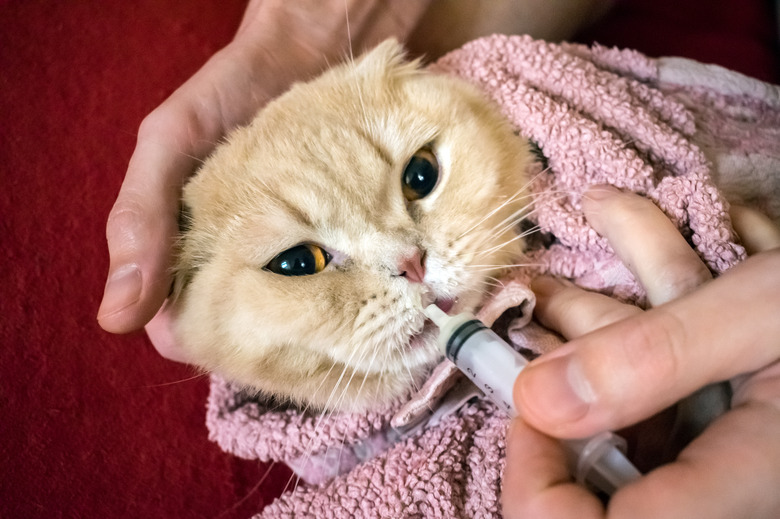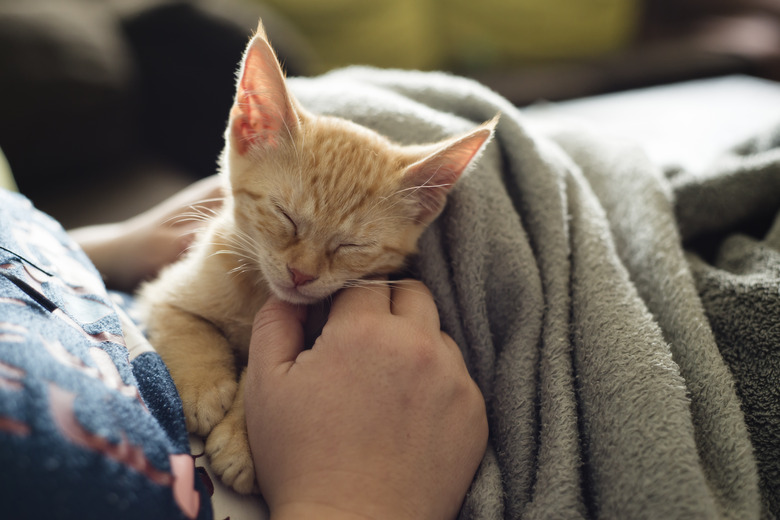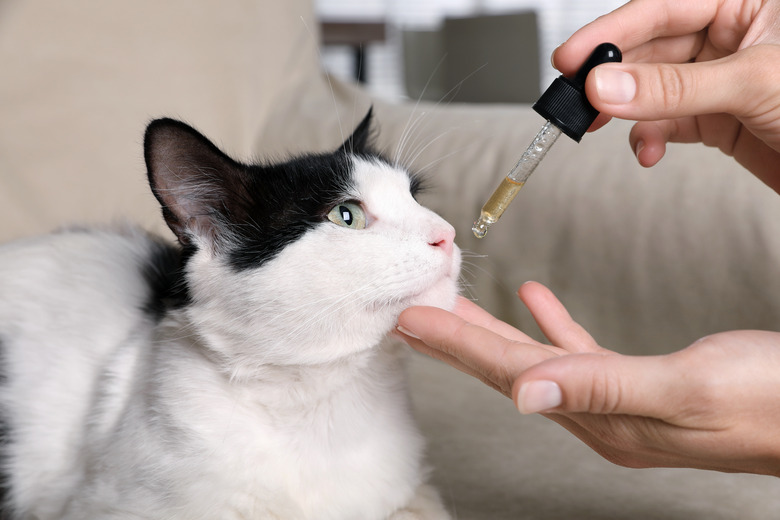How To Give A Cat Medicine
It's a great relief to know that your beloved cat will be okay after a trip to the veterinarian, but it's daunting to learn that you'll need to administer a regimen of liquid medication for the next two weeks. Yikes! Visions of your angry patient clawing your arms to shreds, or worse, losing a finger as you maneuver the medicine down his throat, turns what should be a prescription for simple caregiving into a nightmare. Look on the bright side: Compared to other medications such as pills, capsules, eye drops or injections, liquid medicine is sometimes considered the easiest to give. You could use a syringe or dropper, and if you're lucky, you may have the option to mix it right into your cat's food.
How to give oral medication to a cat
How to give oral medication to a cat
Successfully dosing your cat with liquid medicine requires only that you follow a common sense plan based on the four P's: Preparation, Persistence, Patience, and Precision. To assure smooth sailing, use the alternative five-P plan and add another person. Four hands are always better than two for what could potentially be a challenging task. Armed with this foolproof strategy, you can confidently proceed (with caution), knowing it's possible to achieve a positive outcome for both kitty and you. If you're lucky, you can avoid stress altogether if your cat accepts the dose in his food.
Try adding medicine to your cat's food
Try adding medicine to your cat's food
Before you get to work planning how to give liquid medications, it's a no-brainer to give the easiest method a try first. Most cats prefer canned cat food, even if their diet is predominantly dry, so add the medicine in the prescribed dosage with the supplied dropper or syringe to a small portion of wet food and blend well to incorporate.
Keep your fingers crossed. If the medicine is not too noxious-smelling-or-tasting, your cat may accept it either in the bowl or by hand-feeding it, and the next two weeks will be a breeze. If not, or if your cat has dietary restrictions, you'll need to direct dose.
Prepare your space
Prepare your space
A smart first step when dosing a cat with liquid medicine is to clear the room of all distractions such as other pets and people who tend to get nosy when something interesting is going on. Figure out the best flat surface to use such as a tabletop or countertop, clear it of all items and place a towel on your work area. If possible, hold your cat in your lap which offers him more reassurance. Gather your safety tools which could be a thick towel in which to wrap your cat if she gets a little rambunctious and irritated. You may not need the towel depending on your cats' demeanor. Keep some tissues, anti-bacterial antiseptic solution, gauze, and band-aids nearby in case of missteps on your part.
Be patient yet persistent
Be patient yet persistent
If your cat fusses and struggles as you are attempting to give him medicine, be persistent and kind. Speak to him softly, calmly, and coax him into his happy place. If necessary, wrap him in a towel with only his head exposed, then hold him close to your body or have your helper assist by holding him, and continue praising him for his cooperation. Try to make the experience as pleasant as possible, but it is necessary for his health that he gets his medicine. You can resort to holding him by the scruff of his neck, which naturally opens the mouth a tad, however, if he resists too vehemently, you should stop, and consider consulting with your veterinarian for other options.
Never become upset with your cat while trying to administer medicine. Cats are hardwired to respond negatively to admonishment, restraint, or bullying. As with all pets and people, patience is key in our interactions, especially with difficult and unpleasant situations like taking medications.
How to give a cat medicine with a syringe
How to give a cat medicine with a syringe
Many cats are fussy when they're forced to take medicine, so you need to know how to give a difficult cat liquid medicine, as you never know when you'll need to do it again. Precision is key and alleviates stress for you and your cat.
First, make sure to read the label on the prescription to ensure you give the exact prescribed dosage. If it is a product that requires refrigeration, let it get to room temperature before dosing. Carefully read the instructions on the bottle or in the pamphlet that came with the medicine to see if you need to shake it before use. Fill the dropper or syringe that accompany the medicine with the prescribed dosage.
- Steadying your cat's head with your non-dominant hand, hold the syringe or dropper with your dominant hand and gently insert the tip of the syringe or dropper into the corner of your cat's mouth between the cheek and teeth moving quickly but surely.
- Point the dropper slightly toward the back of your cat's head between his teeth behind his fangs. Do not tilt your cat's head back, which could cause him to inhale or aspirate the medicine.
- Squeeze the dropper or depress the syringe plunger slowly, giving your cat time to swallow the medicine, until the dropper or syringe is empty.
- Hold your cat's mouth closed as you do this to ensure he swallows. If he seems to be holding it in his mouth, blow on his nose to encourage swallowing.
- If your cat spits some medicine out, do not re-medicate.
Rinse the dropper or syringe, and place it back in the refrigerator if necessary. Now, it's time for a treat for the both of you, and you're all done until next time.
Always check with your veterinarian before changing your pet's diet, medication, or physical activity routines. This information is not a substitute for a vet's opinion.


